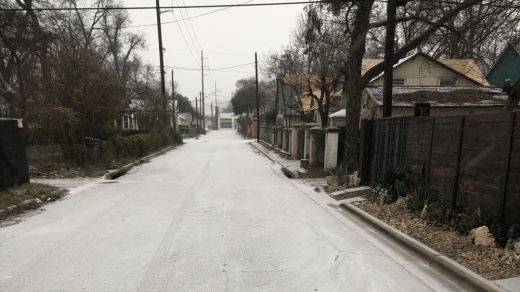In response to a Nov. 16 request from the court, staff laid out plans for supplies, including water, shelf-stable meals, backup power sources and equipment to ensure county vehicles could drive in snowy and icy conditions.
“I think [February's storm] caught all of us by surprise, but I think what we're going through here is we're trying to learn from our mistakes or learn from our lack of preparation,” Travis County Commissioner Margaret Gomez said in reference to Winter Storm Uri, which killed 28 peoiple in the county.
The county identified the purchase of 100 pallets of water that have a shelf life of 10 years, as a key investment. It aims to boost the availability of shelf-stable meals and avoid relying on Meal, Ready-to-Eats—or MREs—which present safety risks and tend to have lower nutritional value.
“There is some safety concern around the MRE itself because it is a self-heating meal which can cause problems depending on who is trying to actually get that thing warm and ready to eat,” said Charles Brotherton, Travis County emergency services executive. “So instead of MREs, we're looking at other boxed, shelf-stable food.”
Brotherton said the county needs to begin identifying facilities that should be prioritized for backup power and ensuring that county vehicles have the snow tire chains necessary to drive in icy or snowy conditions.
Commissioners also noted that the county needs to prepare for natural disasters beyond winter storms, including extreme heat, wildfires and flooding.
“What I really think we'll need to do is to take a broader look at extremes of all weather,” Travis County Commissioner Brigid Shea said. “Wildfire will absolutely be a reality in our community, and so that needs to be incorporated as well.”
Facilities and shelters
Staff discussed ways to improve facilities, so that they can serve as hubs during natural disasters.
A coalition consisting of Travis County, the city of Austin and Austin ISD identified three tiers of hubs: gathering, relief and shelter, Brotherton said. The relief hubs would have a parking lot for large-scale food and water distribution, and the gathering hub would have bathrooms and some food and water.
Kirsten Siegfried, director of the county’s family support services division of the health and human services department, said several facilities needed further investment to bolster their status as a hub. She added it would be important to maintain power at facilities.
“After Winter Storm Uri, we were unable to determine whether the electricity went out or for how long at any of the centers, so to be safe, we had to throw away thousands and thousands of pounds of frozen and refrigerated food from all of our food pantries,” Siegfried said.
Travis County Commissioner Jeff Travillion added that some facilities could play an important role in distributing food, considering places such as schools already have kitchens.
“Schools are already there. They're in neighborhoods. They have a commercial kitchen. If there is backup power, that might be a way to address some of the issue immediately,” he said.
Communications
Staff also discussed several measures to improve communication during natural disasters, including the “First 72 on you” concept that encourages the community to ensure they have sufficient supplies for the first 72 hours of a disaster.
“My team held sort of a focus group yesterday with neighborhoods in the southwest part of the county about preparation, and when we talked about ‘72 on you,’ they were relieved that they would be getting that kind of clarity about things they need to do and when they might expect help,” Travis County Commissioner Ann Howard said.
The communications department will also begin a campaign Dec. 13 to encourage Travis County residents to begin making preparations for a possible storm.





